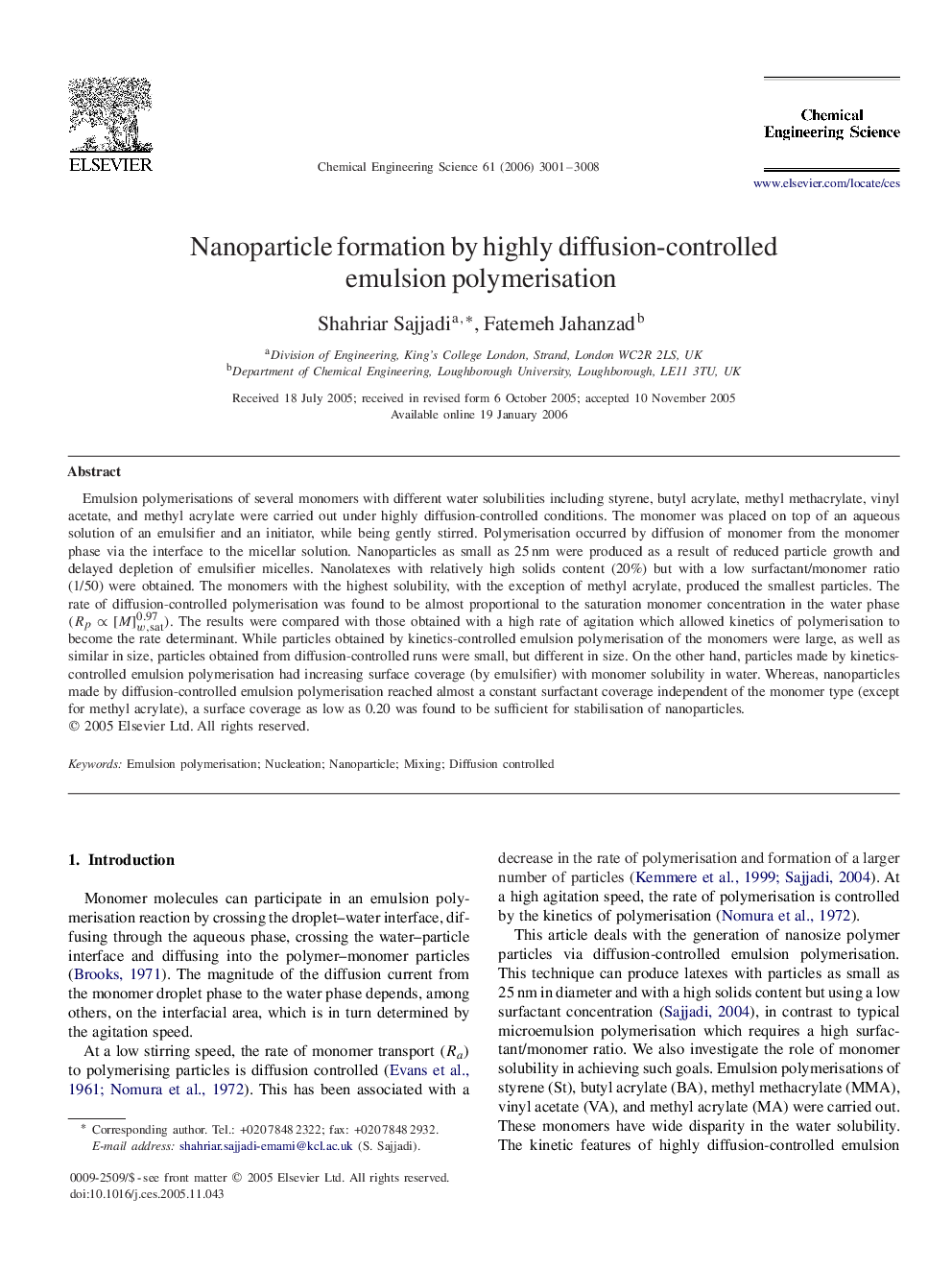| Article ID | Journal | Published Year | Pages | File Type |
|---|---|---|---|---|
| 159863 | Chemical Engineering Science | 2006 | 8 Pages |
Emulsion polymerisations of several monomers with different water solubilities including styrene, butyl acrylate, methyl methacrylate, vinyl acetate, and methyl acrylate were carried out under highly diffusion-controlled conditions. The monomer was placed on top of an aqueous solution of an emulsifier and an initiator, while being gently stirred. Polymerisation occurred by diffusion of monomer from the monomer phase via the interface to the micellar solution. Nanoparticles as small as 25 nm were produced as a result of reduced particle growth and delayed depletion of emulsifier micelles. Nanolatexes with relatively high solids content (20%) but with a low surfactant/monomer ratio (1/50) were obtained. The monomers with the highest solubility, with the exception of methyl acrylate, produced the smallest particles. The rate of diffusion-controlled polymerisation was found to be almost proportional to the saturation monomer concentration in the water phase (Rp∝[M]w,sat0.97). The results were compared with those obtained with a high rate of agitation which allowed kinetics of polymerisation to become the rate determinant. While particles obtained by kinetics-controlled emulsion polymerisation of the monomers were large, as well as similar in size, particles obtained from diffusion-controlled runs were small, but different in size. On the other hand, particles made by kinetics-controlled emulsion polymerisation had increasing surface coverage (by emulsifier) with monomer solubility in water. Whereas, nanoparticles made by diffusion-controlled emulsion polymerisation reached almost a constant surfactant coverage independent of the monomer type (except for methyl acrylate), a surface coverage as low as 0.20 was found to be sufficient for stabilisation of nanoparticles.
